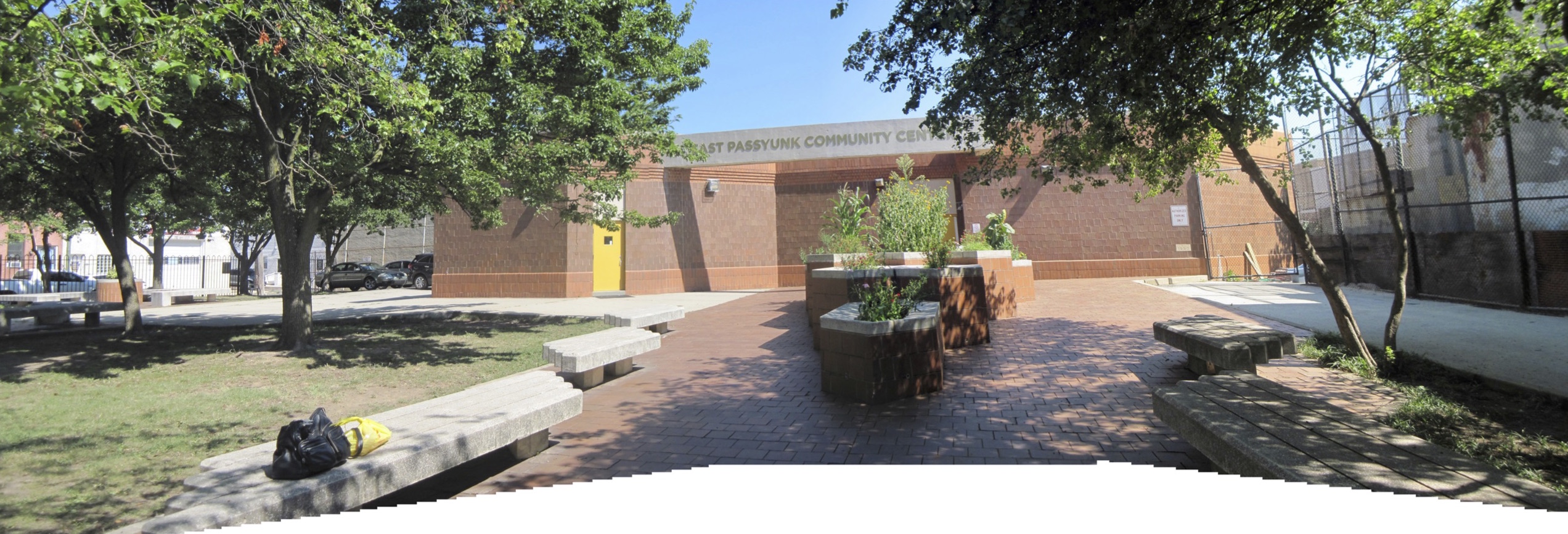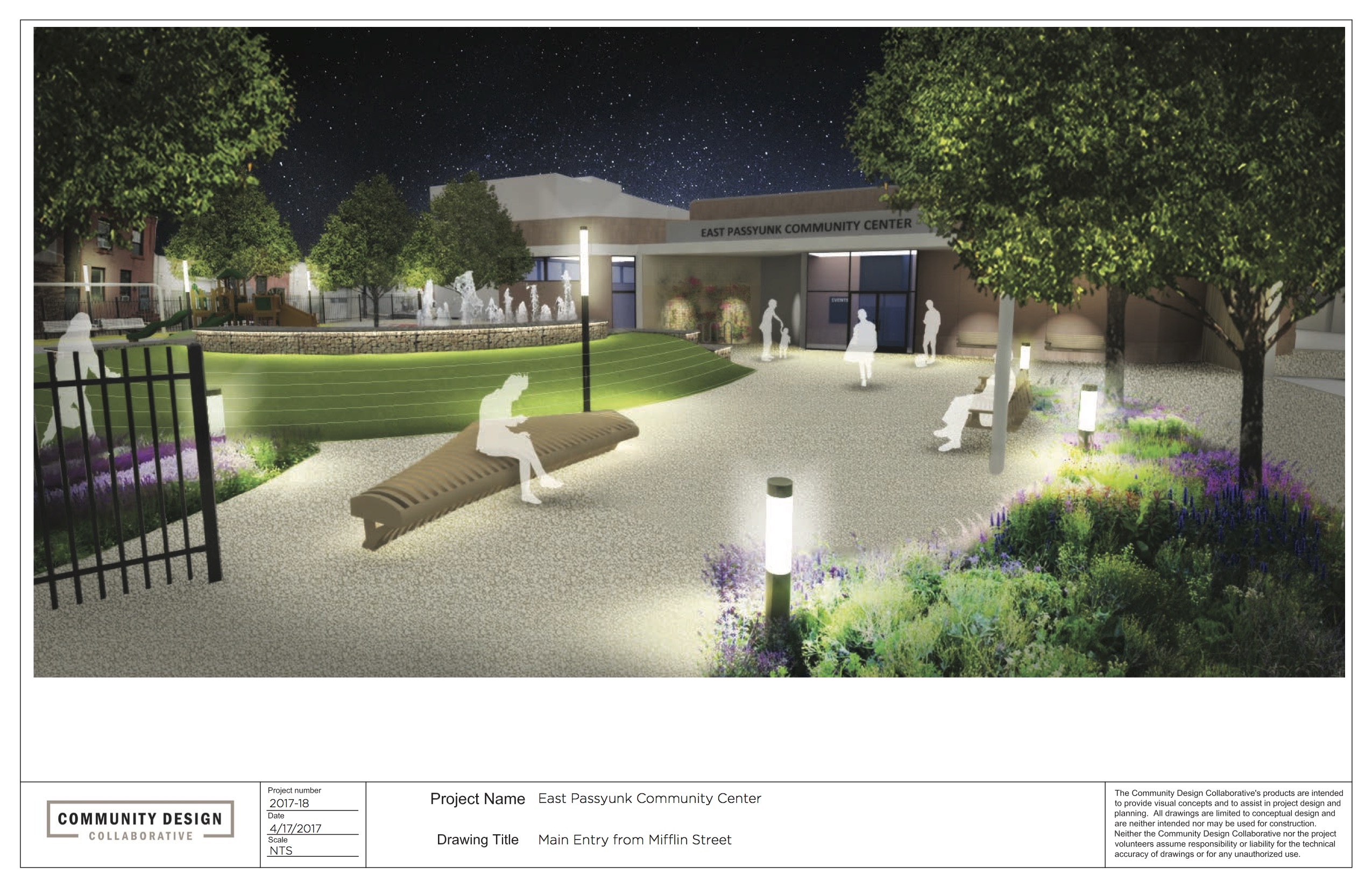Upgrade in store for East Passyunk Community Center outdoor space
By Sequoia Medley
An eager crowd gathered at the East Passyunk Community Center (EPCC) on Tuesday, December 11th for the unveiling of designs for the center’s outdoor spaces. The renderings were well-received as an exciting reimagining of the sole public green space serving the surrounding neighborhood. The presentation, by a team of design professionals assembled by the Community Design Collaborative (CDC), was the culmination of several public visioning sessions and meetings with those who use the space.
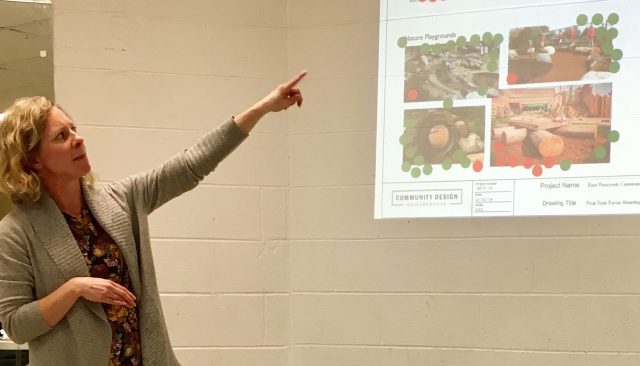
The year-long planning process was spearheaded by the EPCC Advisory Council. The Council works with Philadelphia Parks & Recreation to organize special events, promote the Center, and plan and raise funds for site improvements.
EPCC, 1025 Mifflin Street, provides space for athletic, dance, art, and music programs. The building’s meeting spaces host civic meetings, Girl Scouts, the local chapter of the Special Olympics, Vikings New Year’s’ Brigade, a seniors group, as well as cultural, heritage, and history events.
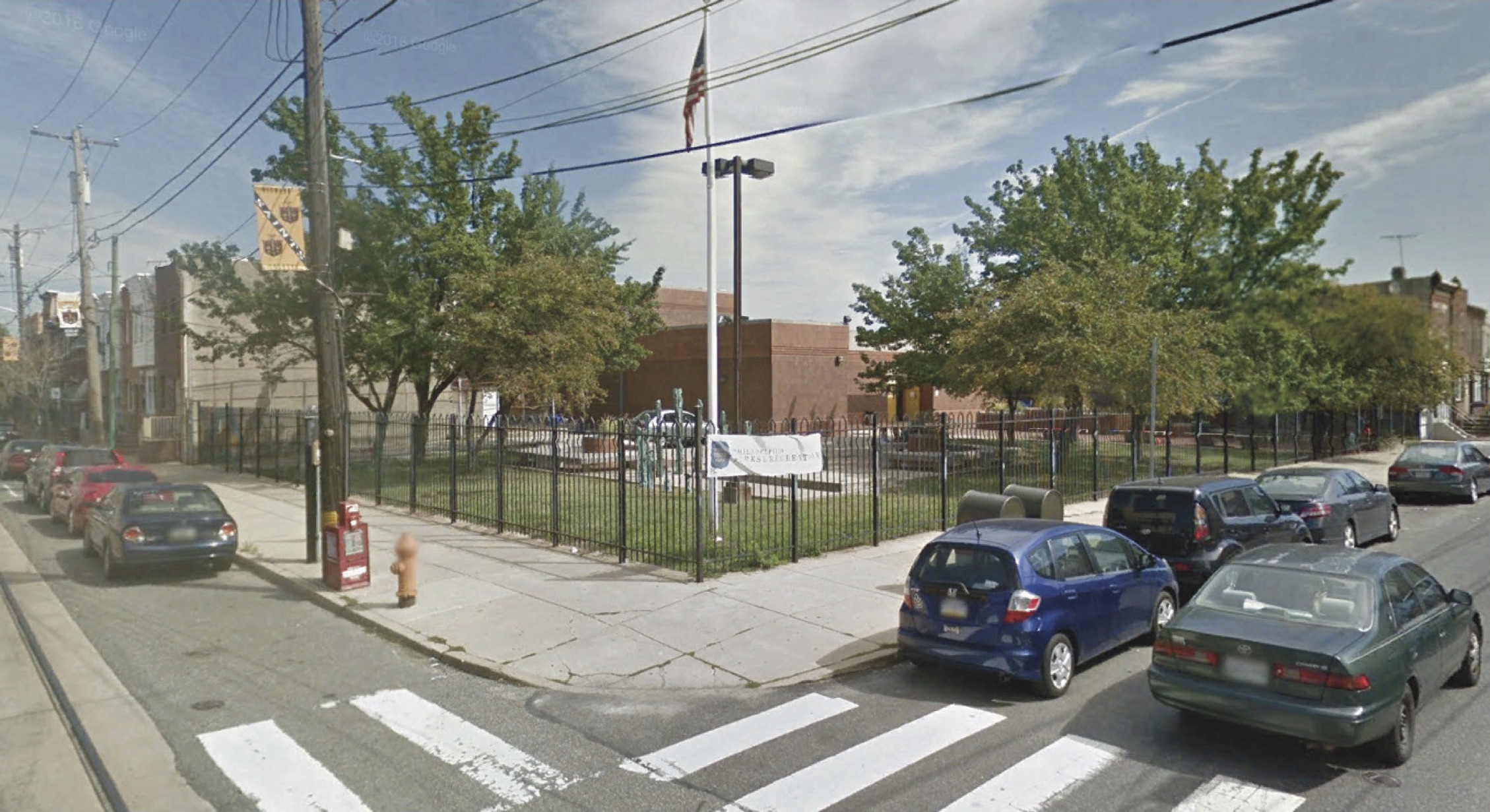
The green space outside the building is a different story. The corner site is one of the only Parks & Rec facilities parks located between Broad Street and 6th Street from Marconi Plaza to Columbus Square. Sadly, it is largely paved with concrete except for an area of threadbare grass. Several trees provide shade, although an arborist reported that most were near the end of their lifespan. The site has no permanent play equipment, but children make use of the sculptural bronze-and-concrete sundial located on the site’s southwest corner.
Since the Advisory Council was formed in 2015 they have made improvements to the site including removing overgrown landscaping and adding a bocce court on the site of an outdoor smoking area used by the building’s former tenants.
Attempting to provide something for everyone, the plans call for a radical redesign that creates a welcoming multipurpose arena designed to serve the diverse needs of neighbors of all ages and interests.
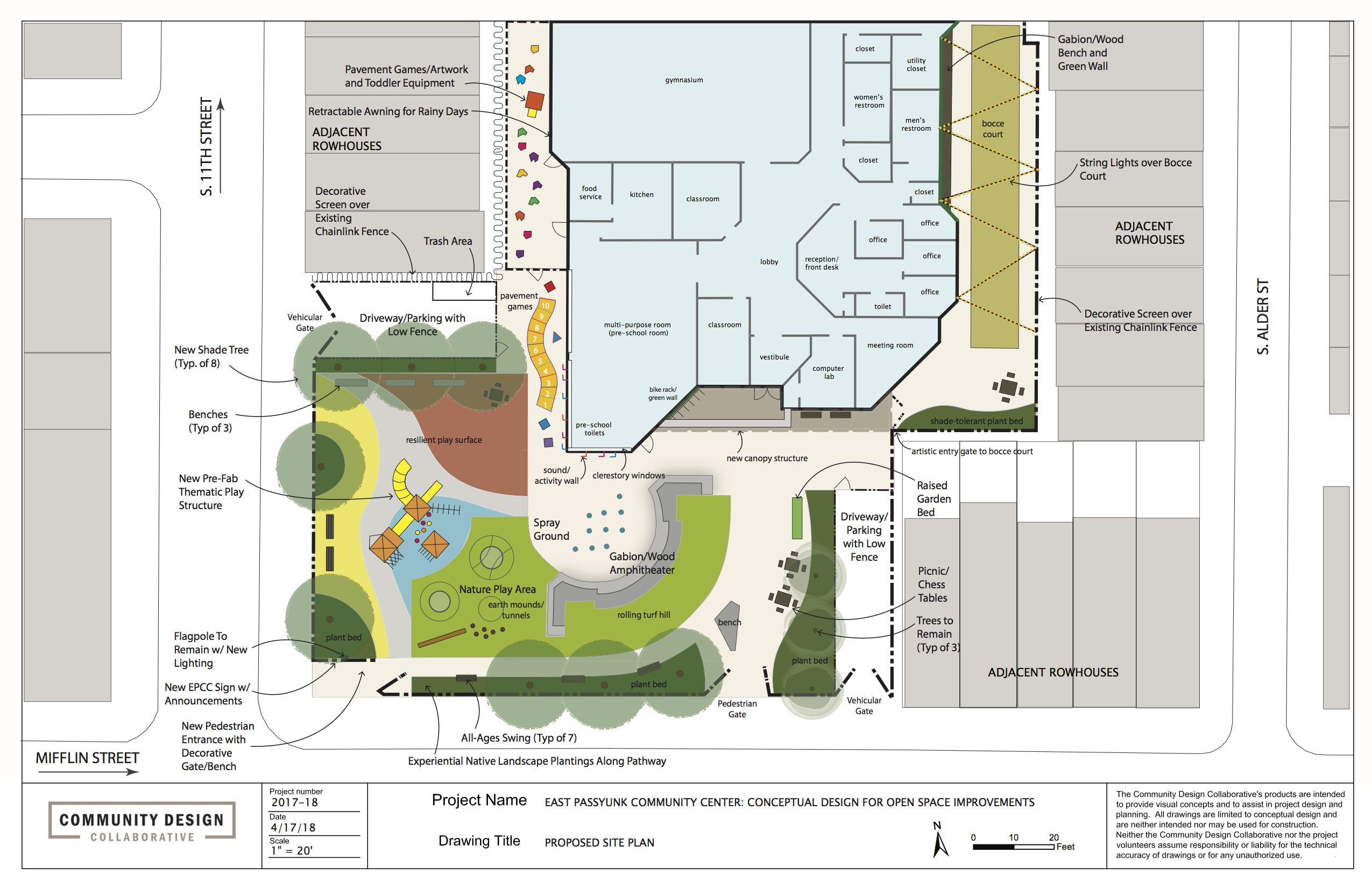
Leah Rominger and Missy Van Sleet, two of the seven-person volunteer team assembled by the CDC for this project, summarized the previous community input before unveiling the design renderings intended to be presented to future landscape architects and contractors.
“These are primarily for fundraising, this is a proof of concept.” said Ms. Van Sleet explained to the audience. “When you go out and hire your landscape architect or your architects for the facade, you can say this is what we want and not pay for a schematic phase. You save a lot of time and professional services because you know the end goal. It will help limit the scope.”
Options are included for altering the facade of the building, extending the vestibule, creating a green wall, and adding windows to make the building less imposing and to bring natural light into the tot rec room.
A new entrance
A significant aspect of the proposed design is a new, welcoming entrance to the site on the corner of 11th and Mifflin. Complete with seating, large informative signage, and lighting, the space is intended to be used by the community. This new entrance will lead to a path through a play area that melds traditional structures with free-form nature-inspired play.
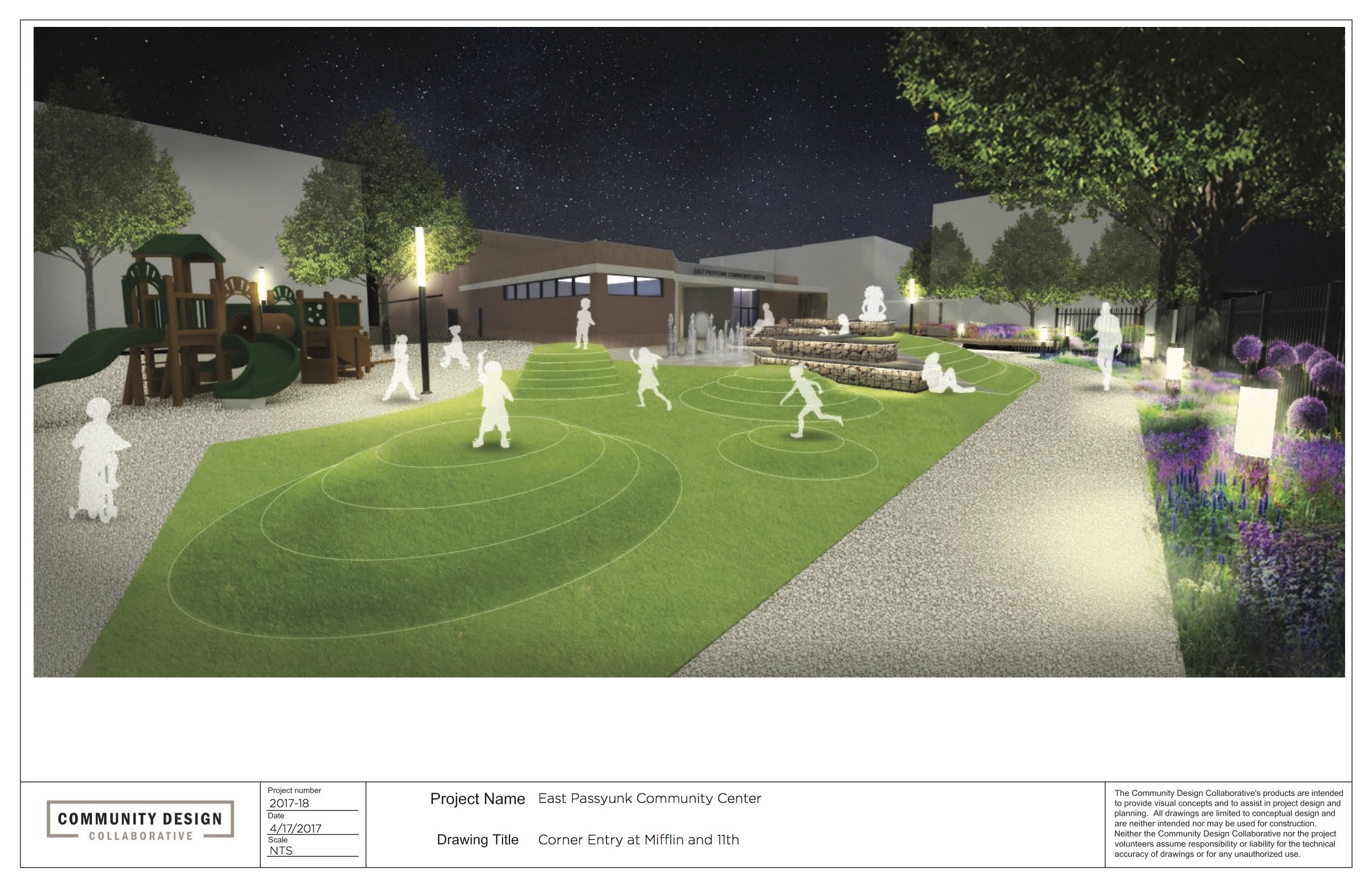
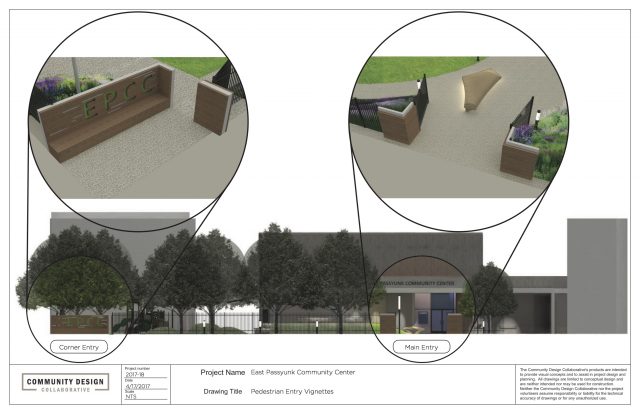
Making a splash
Featuring ambitious earthscaping, the new grass area will be raised into a berm to create play areas. Curved amphitheater seating facing the building can accommodate cultural happenings such as music performances and outdoor movie showings. Between the seating and the building will be a splash pad area, anticipated to be the first phase completed.
CDC has broken down the ambitious project into four phases that may be implemented at different times, or simultaneously, depending on funding availability. Although the work would ideally be completed in one fell swoop, many recognize that the integration of a water play space is an ideal first phase.
Joseph F. Marino, chair of the Advisory Council, is very enthusiastic about the addition of a sprayground. “First of all, this neighborhood needs it in the hot weather. There is nothing for the kids to do in the immediate vicinity when the weather is sweltering. And secondly, it is one of those things that draws people’s attention and gets other funders to say, oh, we want to add to this.”
Swings for adults!
The plans are not just for children. The design incorporates green space into the bocce court on the east side of the building, and “all ages” swings. On the practical side, the slippery tiles and obstructed entrance from Mifflin Street will be made more accessible. The planters will be moved to clear the pathway and create a barrier between the public space and the driveway. EPCC still plans on maintaining their P3 native garden status by moving current species to the new raised beds.
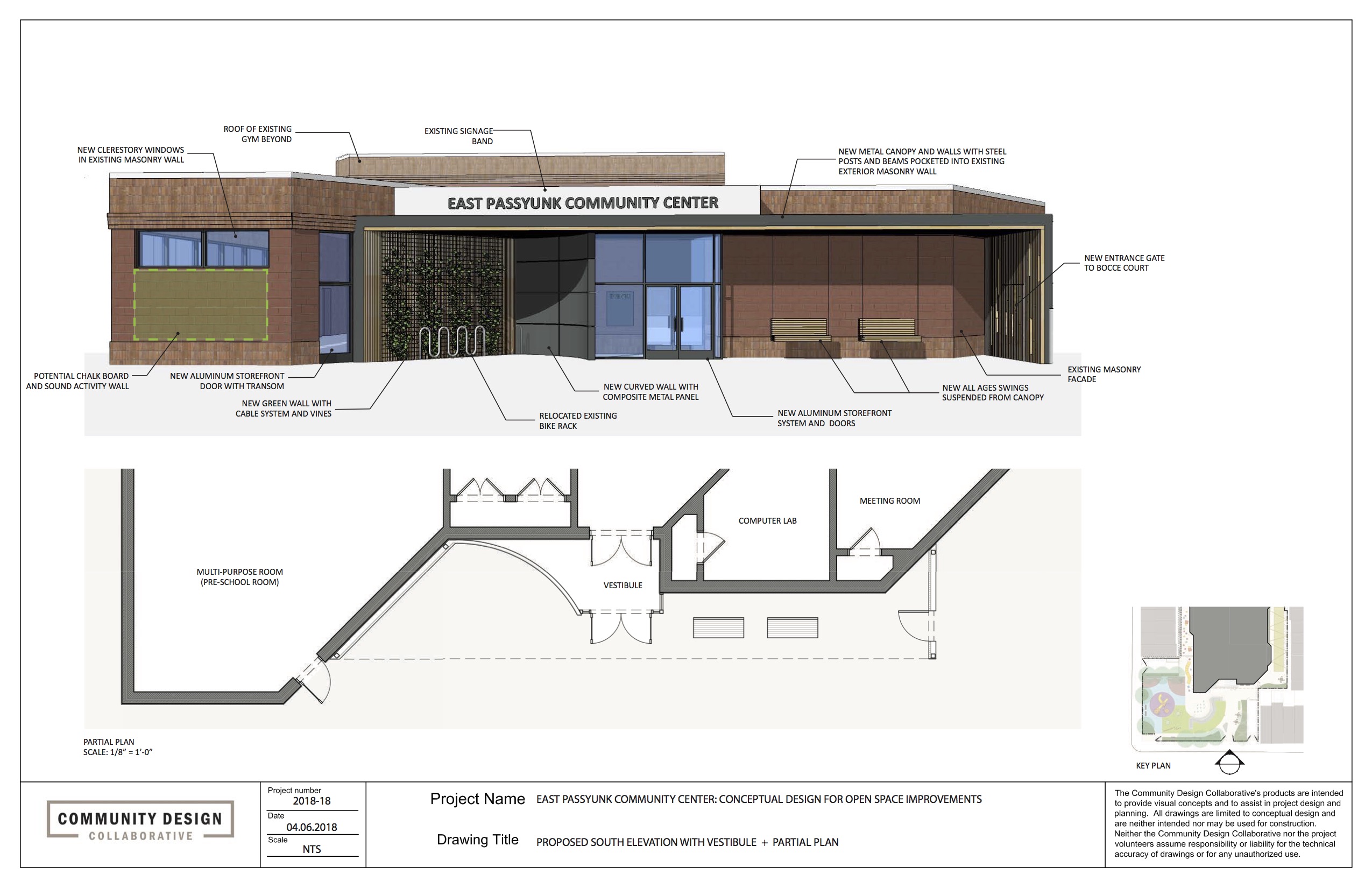
The existing sundial sculpture will be removed to allocate space for the new entrance and play area. EPCC is in discussion with arts organizations to find the work a new home.
According to Ms. Rominger the project will cost close to $1 million, with funds coming from grants and private donations. To encourage support for the project, and assist with donations, phase one will begin as early as this summer. There are several naming opportunities within the project.
It will take an estimated 3 years to complete all phases, provided funding can be secured. If you are interested in contributing, EPCC Advisory Council can accept earmarked donations.
